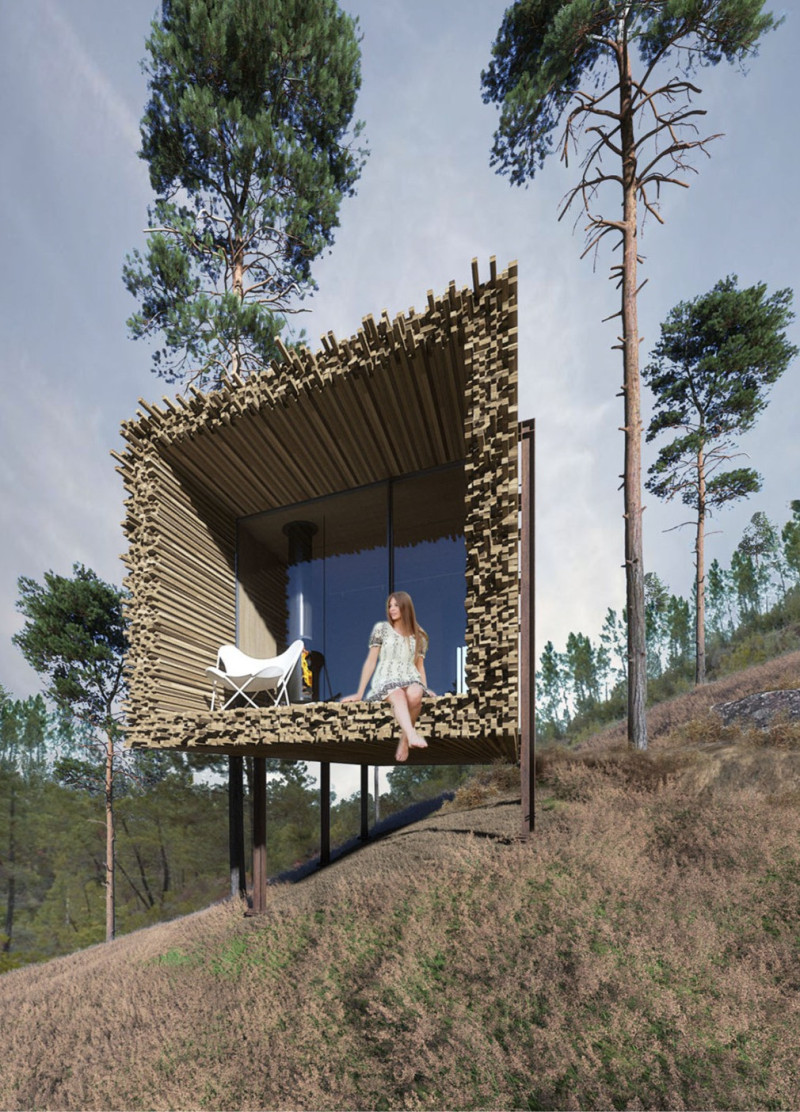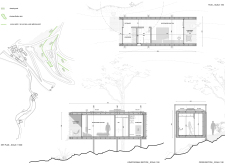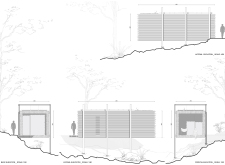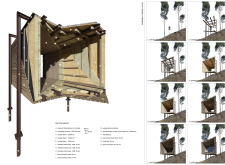5 key facts about this project
The design of the sleeping pods is centered around a balance between human comfort and environmental care. Located in a picturesque landscape filled with trees, these pods provide a place for rest and reflection. They draw influence from traditional wooden bundles used by rural communities for transporting materials from the forest. This connection to history gives the design a sense of purpose and place within nature.
Materials and Structure
The sleeping pods are built with a strong framework made of COR-TEN steel, known for its durability and resistance to the elements. This steel structure is complemented by wooden beams of different sizes, which add warmth and a natural touch. The combination of these materials not only ensures stability but also helps the design fit well within its surroundings, creating a cohesive visual presence.
Sustainability and Efficiency
Sustainability is a core focus of the design. Oriented strand boards, used in the walls, enhance energy efficiency, while hemp insulation contributes to thermal comfort throughout the year. Water management systems have been integrated into the design for collecting rainwater and managing gray water. Heating and power come from solar panels, which allow the pods to operate independently and reduce their environmental impact.
Spatial Arrangement and User Experience
The arrangement of the sleeping pods is intentionally planned to enhance views while limiting visual impact on the landscape. Their elongated shape encourages airflow, promoting natural ventilation inside. Large glass windows invite sunlight and provide clear views of the forest. This thoughtful approach creates a calming atmosphere that connects occupants with the outdoor environment, encouraging a sense of peace and relaxation.
Incorporated Design Detail
An interesting feature of the sleeping pods is their reversible design. This means they can be easily assembled and disassembled, similar to modular furniture. This flexibility allows for minimal disruption to the landscape during installation or relocation. As a result, the pods can adapt to different settings while maintaining their role as functional, sustainable living spaces that respect the natural world.





















































